|
Director's Message
Colleagues,
It is another busy week following on from the AGCC Conference and the AuScope Workshop in Adelaide, and award of the Prime Minister’s Prize for Science to Kurt Lambeck. If you didn’t manage to listen to the Science Show on ABC Radio National, please do. Kurt’s interview by Robyn Williams was a true highlight and insight into Kurt’s unusual path into and through his outstanding career. The podcast is at https://radio.abc.net.au/programitem/pgOGnA1yl7?play=true
This week we start with the 14th APRU Multi-Hazards Symposium being held at University House on Risk, Resilience and Reconstruction: Science and Governance for Effective Disaster Risk Reduction and Recovery in Australia and the Asia-Pacific. The School is a sponsor of this important regional conference, which is aligned to the School’s ‘Earthquakes’ NIG Goal. The conference program and other information can be found at http://rses.anu.edu.au/news-events/14th-apru-multi-hazards-symposium
On Thursday there is a workshop at the Shine Dome on “Reinvigorating Ocean Acidification Research in Australia”. The workshop will be held in two parts. A morning session for policy makers and research users, followed by an afternoon session to highlight research expertise and regional foci across Australia. If you are interested in attending any parts part or all of the workshop it is suggested you contact Michael Ellwood or my office. We will be able to put you in contact with the organizers (Philip Boyd, Bronte Tilbrook, Catriona Hurd, Andrew Lenton).
Finally could everyone who has been asked to provide information reporting on the National Institutes Grant, please do so by close of business on Wednesday afternoon. This is to allow collation and submission by Friday. Thank you and best wishes for the week ahead.
kind regards,
Steve |
|
WORLD’S LARGEST MINERAL EXPLORATION COLLABORATION LAUNCHES
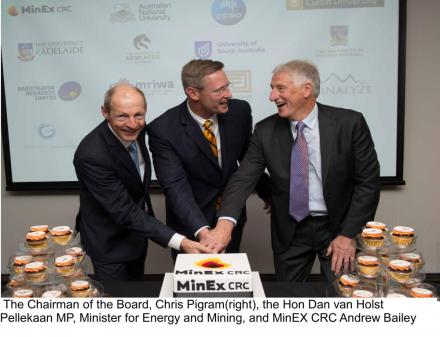
|
|
MinEx CRC, a $218 million research collaboration aimed at developing technologies to increase the discovery of new mineral deposits, was launched Monday 15th in Adelaide by the Hon Dan van Holst Pellekaan MP, Minister for Energy and Mining. Though the efforts of the 21st Century Resources Frontier Research Theme, RSES and ANU will be part of this initiative. Photo shows (right) the Chairman of the Board, Chris Pigram, the Hon Dan van Holst Pellekaan MP, Minister for Energy and Mining, and MinEX CRC Andrew Bailey (left). The MinEx Cooperative Research Centre (MinEx CRC) has secured $50 million in Federal Government CRC funding, as well as strong industry and research backing. Participants include 34 partners from the Mining Equipment, Technology and Services (METS) sector and major miners BHP, South32, Anglo American and Barrick committing $165 million (cash and in-kind) over the next 10 years. |
|
|
GRACE/GRACE FO Science Team Meeting, Germany 9-11 October
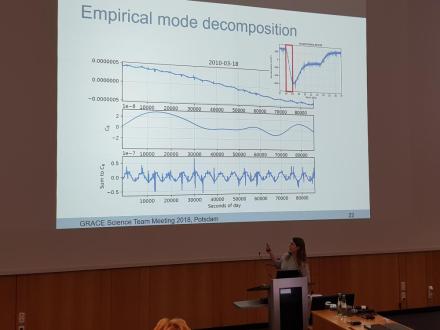
|
|
Rebecca McGirr (PhD student) and Dr Paul Tregoning(AD Mentoring) attended the GRACE/GRACE FO Science Team Meeting in Potsdam, Germany from 9-11 October. This was the first Science Team meeting since the launch of the GRACE Follow-On mission in May 2018. Rebecca gave a presentation on her work that involves the calibration of accelerometers on-board the GRACE satellites and showed how to estimate accurate gravity fields in the presence of temperature-related, long wavelength spurious signals in the accelerometer observations. The topic of the presentation was very pertinent, given the sub-optimal performance of the accelerometers onboard one of the GRACE FO satellites. |
|
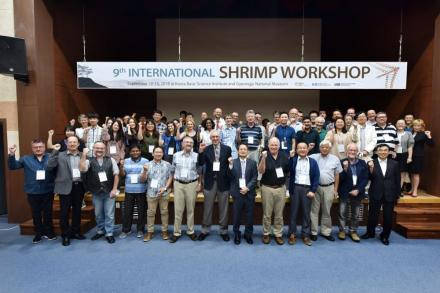
|
|
The 9th International SHRIMP Workshop
The 9th International SHRIMP Workshop, a gathering of people from SHRIMP labs around the world, was hosted by the Korea Basic Science Institute (KBSI) from September 10 to 14. It was held at two venues; KBSI Ochang centre and Gyeongju National Museum. Six members of the RSES SHRIMP group attended the conference. Pre-workshop sessions on 10 September (SIMS developments and imaging) concluded with a tour of the impressive analytical facilities at KBSI and an icebreaker. Apart from the very interesting plenary lectures on TOF-SIMS and using SHRIMP for analysing biominerals, other sessions on the following days included “New advances in SHRIMP analyses” and “Recent trends in SHRIMPing”. A tutorial session on the new SQUID 3.0 software for processing SIMS data was well received and appreciated by the SHRIMP community. Less well received was the announcement by the CEO of Australian Scientific Instruments that ASI would cease manufacturing and servicing SHRIMPs after the new SHRIMP V is delivered to the Shandong Institute of Geological Sciences in late 2019. The ANU has signed an agreement to transfer these roles to a new company in China, DUNYI (Beijing) Technology Development Co. Ltd (DTDC). The CEO of the new company is Prof. Liu Dunyi, former Director of the Beijing SHRIMP Centre. The mid-conference field excursion took us to Cheongsong UNESCO Global Geopark. The cliffs, gorges and magnificent waterfalls at the place were a visual treat. We also visited Seoak Seowon, which is a Confucian academy where scholars where taught during the Joseon Dynasty (1392–1897).The last day of the conference included a guided exploration of the UNESCO World Heritage Site in the historical capital of Korea, Gyeongju. The city has significant archaeological remains, including the most beautiful Bulguksa temple, pagodas and royal tombs. |
|
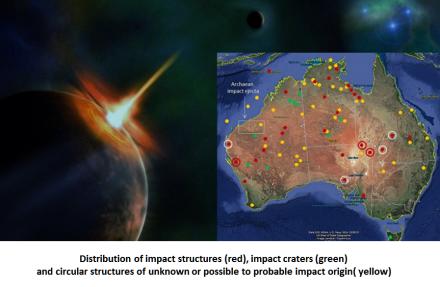
|
|
Asteroids and crustal evolution – synopsis of a new book
Thanks to their long-term geological stability, Precambrian and younger terrains in the Australian continent contain a large number of impact structures and probable impact structures. These include 38 confirmed asteroid impact structures and 43 ring structures, many of which constitute possible to probable asteroid impact structures. These structures have been the subject of more than half a century of studies by geologists from universities, geological surveys, and related institutions. The structures range from several tens of meter-large craters, such as the Henbury and Veevers craters, to buried structures larger than 100 km in diameter, such as the Woodleigh impact structure and the Warburton probable impact structure. Discoveries and research of many of these structures, notably by Peter Haines, Eugene and Caroline Shoemaker, John Gorter, Robert Iasky, Victor Gostin, George Williams, and others, published in the literature, are reviewed in the book “Asteroid Impacts, Crustal Evolution, and Mineral Systems with Reference to Australia.” The book presents a compilation and a review of Australian impact structures, impact ejecta/fallout deposits, and related mineralization, including discussion of the significance of many of these structures for crustal evolution and for mineralization. The book further reviews asteroid impact ejecta/fallout units, mainly of Archaean age studied in the Pilbara Craton of Western Australia and also the late Proterozoic Bunyeroo impact layer in South Australia. Discoveries of impact fallout units in the Pilbara Craton by the US scientists, including Bruce Simonson, Scott Hassler, Don Lowe, and Gary Byerly, and their students and follow-up discoveries and research by Australian geologists have defined the Pilbara as one of the two best documented terrains where Archaean impact ejecta/fallout deposits are identified, the other terrain being the Kaapvaal Craton in southern Africa. A synthesis of evidence from both cratons indicates periods of large asteroid bombardments during ~3.47–2.48 billion years ago, including peak bombardment about 3.25–3.22 billion years ago. The latter period coincides with an abrupt transformation of an early Archaean granite–greenstone crust to mid- to late Archaean semi-continental crustal regimes, underpinning the significance of heavy asteroid impact events for crustal evolution. Thermal and hydrothermal processes associated with impact cratering bear important consequences for the formation of mineral deposits, such as Ni at Sudbury and Pb–Zn at Siljan and Kentland. Impact structures may also provide sites for accumulation of hydrocarbons, whereas in some instances fracturing associated with impact structures allows outward migration of oil and gas.
|
|
|
2018 Undergraduate Groundwater Field Trips
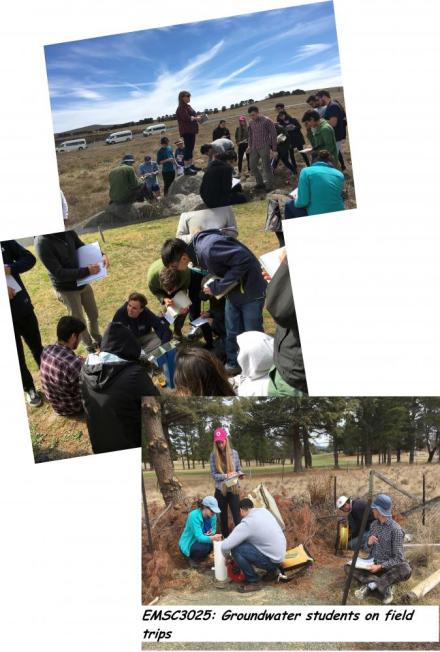
|
|
Our EMSC3025: Groundwater students have completed two fieldtrips throughout the semester to complement the lectures and workshops delivered on the themes of physical and chemical hydrogeology.
The first field trip was a day-trip in late-August to the township of Bungendore, where they are reliant on the water resources of the Bungendore Alluvium for their town supply. We visited bores operated by Queanbeyan-Palerang Council to monitor this water resource and groundwater in neighbouring aquifers, and collected data relating to the bore construction and groundwater levels at each site. The students utilised this information to prepare an assessment report describing the groundwater potentiometric surface and how this relates to groundwater flow.
This was followed up by a weekend fieldtrip down to the Monaro Region in late-September where we explored the changing geology, the resultant geomorphology, and how this may influence geochemistry of groundwater and surface water in the region. The students used an assortment of sampling techniques to collect representative water samples for laboratory analysis, and utilised field analytical instrumentation (physicochemical probes, hand alkalinity titrator, and a UV-VIS spectrophotometer) to collect further geochemical information. We were fortunate enough to see one of the original groundwater wells that were dug during European settlement, and the overnight stay in Jindabyne was a nice break from the information-packed days!
The students are currently interpreting the geochemical data and compiling their assessment reports, which should make for some great reading over the coming weeks!
These field trips are not only a great way to see some of the beautiful country side only a stone’s throw away from Canberra, but a great hands-on experience for the budding hydrogeologists to gain an appreciation for the work that goes into collecting hydrological and hydrogeochemical data. The field trips have also been a great way for them to apply the concepts we have explored throughout the semester. We could not have done this without access to groundwater bores, so we would like to whole-heartily thank the Queanbeyan-Palerang Regional Council, Snowy-Monaro Regional Council, and various private landholder holders for their support and access to their bores.
We hope the students enjoyed the time away from the classroom, and we wish them all the best for their exams and in their future endeavours.
|
|

|
|
The Mars InSight mission
InSight, short for "Interior Exploration using Seismic Investigations, Geodesy and Heat Transport", is a lander designed to study Mars' interior structure. Landing in November 26th, 2018, it will seek answers about the early formation of rocky planets in our inner solar system. The InSight lander carries a seismometer, SEIS, that will record seismic waves traveling through the red planet. This will tell us what might be creating the waves (marsquakes, meteorite impacts), and what are the physical characteristics of the solid interior of Mars in terms of temperature, composition, and major stratigraphic boundaries.
During its journey through interplanetary space, the spacecraft carrying the InSight lander communicates to Earth via the 34-meter DSS-36 antenna of the Canberra Deep Space Station (DSN) in Australia. RSES will be involved in the analysis of the seismic data trhough collaboration with Lyon University and IPGP, in France. Investigations will be related to the nature of the dichotomy of the Martian crust, which is thicker with higher surface topography at south, and thinner with lower elevations at north. The approach will combine satellite observations to constrain the geology, the construction of seismic models from thermal convection simulations, and the simulation of marsquakes and seismic wave-propagation for comparison with observed data. The ultimate objective is to constrain Mars' thermal evolution, and have insight into how the terrestrial planets, such as Mercury, Venus, Earth, and Mars, have formed.
Contact: Benoit Tauzin, benoit.tauzin@anu.edu.au
|
|
|
RSES Staff at the 2018 Prime Minister’s Prizes for Science along with Emeritus Professor Kurt Lambeck , recepient of the Prime Minister’s Prizes for Science at the event.
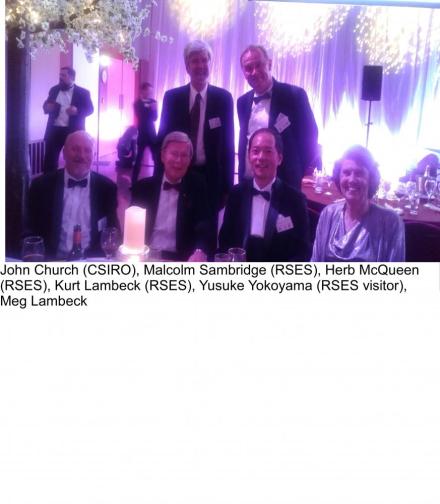
|
|
|
|
|
|
|
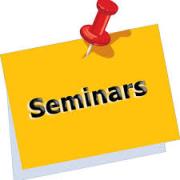
|
|
This Week's Seminars:
Student Seminar:
Jaeger 1 Seminar Room
Tuesday: 23rd October
4.00pm - 5.00pm
Topic: 2018 RSES PhD field trip to Northern Territory, Australia
Speaker: Ms Tharika Liyanage(RSES)
Climate and Fluid Physics Seminar
Hales Seminar Room (J7)
Tuesday: 23rdOctober
2.00pm - 3.00pm
Topic:
Speaker:
Palaeoenvironments Seminar:
Hales Seminar Room (J7)
Wednesday: 24th October
12noon - 1.00pm
Topic:
Speaker:
School Seminar:
Jaeger 1 Seminar Room
Thursday: 25th October
1:00pm-2:00pm
Topic: Geologic Histroy of The Wyoming Province, One of the Oldest Fragments of Crusts in the World
Speaker: Ronald Frost-University of Wyoming
Petrology and Geochemistry Seminar:
Ringwood Room (J4)
Friday: 26th October
12.30pm - 1.30pm
Topic:
Speaker:
|
|

|
|
Publications
Sigl, M., Abram, N. J., Gabrieli, J., Jenk, T. M., Osmont, D., and Schwikowski, M.: 19th century glacier retreat in the Alps preceded the emergence of industrial black carbon deposition on high-alpine glaciers.
|
|

|
|
Congratulations Jean Braun for winning the EGU Medal
Jean Braun was a former RSES staff member for 10 years+. The EGU Holmes Medal will be received at the EGU 2019 meeting in Vienna.
|
|

|
|
ANU offers a range of counselling services for enrolled students (undergraduate or postgraduate) who might be experiencing a range of difficulties around mental health, stress, motivation, social anxiety and so on. For more information, visit:
http://www.anu.edu.au/students/health-wellbeing/counselling
In addition to the group programs and workshops they also offer confidential counselling services for individuals. If you have concerns about the welfare of any of your students, please consider directing them towards this service. |
|
|
Superstars of STEM - Applications now open

|
|
The search for our next Superstars of STEM is on!
STA’s world-leading Superstars of STEM program provides a diverse group of passionate and articulate women in all areas of STEM – and at all career stages – with the skills and opportunities to become visible public role models and help change the public stereotype of scientists.
FIND OUT MORE HERE |
|

|
|
Negative Emissions Conference
Calling for abstract and registration to the Negative Emissions conference sponsored by RSES.
Where: The Shine Dome, Canberra
When: 30-31 October 2018
More information can be found here: and here: |
|

|
|
The 20th Australian Organic Geochemistry Conference (AOGC) - Origins of oil, old organics and organisms
RSES in collaboration with Geoscience Australia, will host this year’s Australian Organic Geochemistry Conference (AOGC), to be held at the Finkel Theatre, John Curtin School of Medical Research, ANU from 3–7 December 2018.
Details about AOGC 2018, including information about how to register and submit abstracts, are now available on the conference website:
http://www.ga.gov.au/news-events/conferences/australian-organic-geochemistry-conference
|
|
|
|